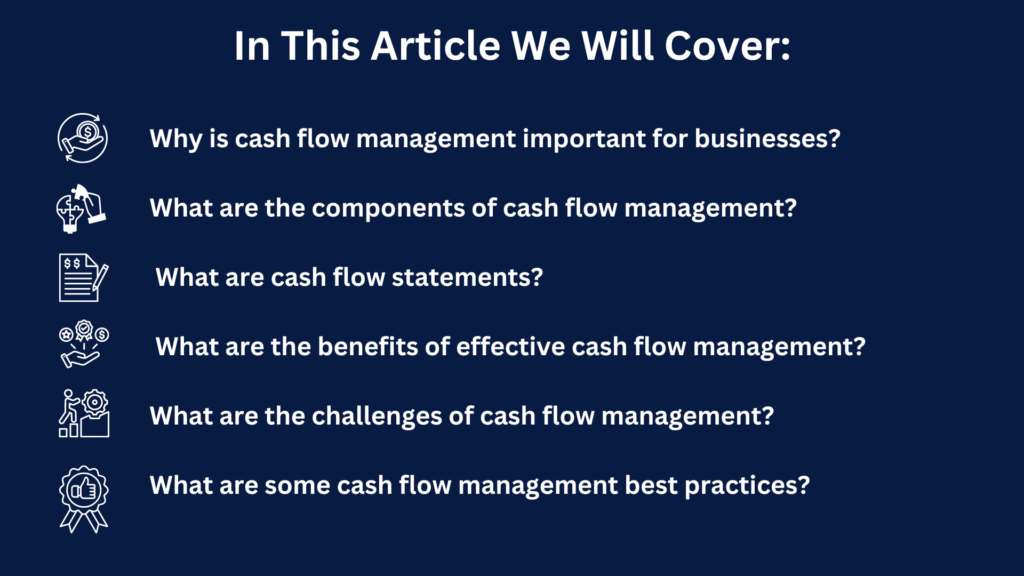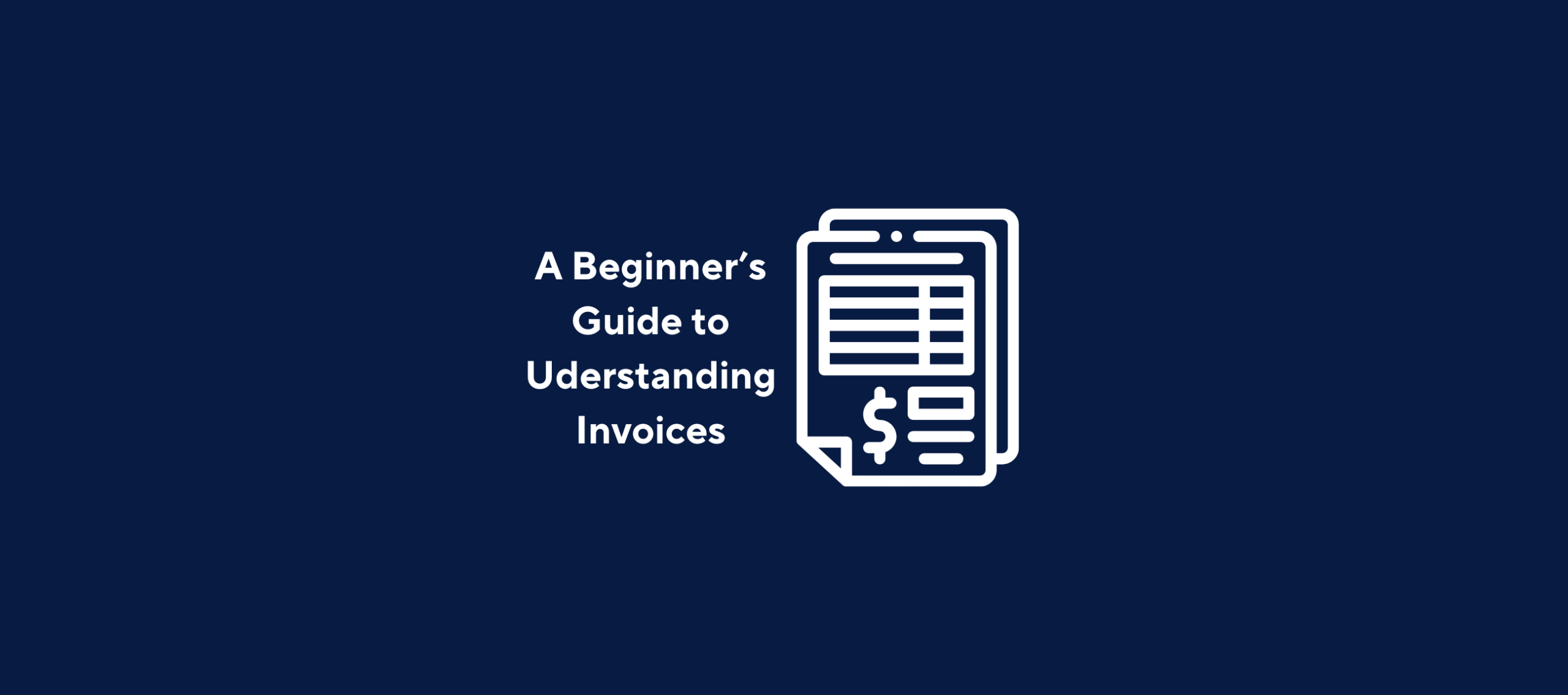Cash flow management is a crucial aspect of financial management for businesses of all sizes, especially small businesses and startups.
Put simply, it refers to the process of monitoring, analyzing, and optimizing the inflow and outflow of cash within a company. By effectively managing cash flow, businesses maintain a healthy cash balance in their bank accounts. This ensures they have enough liquidity to cover operational expenses, invest in growth opportunities, and meet financial obligations.
The smartest cash flow management is a comprehensive approach; including cash flow analysis, cash flow projections, and real-time monitoring of the cash flow statement. This process helps in optimizing working capital, managing accounts payable and receivable, and addressing cash flow issues promptly.
Overall, whether dealing with negative cash flow or strategizing for future cash flow needs, maintaining financial discipline is key to sustaining business operations and achieving long-term success.

Why is cash flow management important for businesses?
Cash flow management is essential for the financial health and stability of any business. It plays a pivotal role in ensuring the company’s day-to-day operations run smoothly and that it remains financially solvent. Here are some key reasons why cash flow management is so important:
• Meeting Financial Obligations: A positive cash flow allows a business to pay its bills, suppliers, and creditors on time, avoiding late payment penalties and preserving its reputation.
• Planning and Budgeting: Understanding cash flow patterns helps businesses create accurate financial forecasts, plan for future expenses, and allocate resources effectively. This can also be crucial for raising capital.
• Capital Expenditures: Cash flow management helps businesses determine whether they have an adequate amount of money to invest in equipment, facilities, or other new capital expenditures.
• Business Growth: Adequate cash flow is essential for broader growth initiatives, such as expanding operations, launching new products, or entering new markets.
• Dealing with Uncertainties: Cash reserves provide a safety net during economic downturns or unexpected events, allowing businesses to weather challenging times.
What are the components of cash flow management?
Cash flow management involves tracking and analysing three primary components of cash flow:
• Operating Cash Flow (OCF): This component represents the cash generated or used in the daily operations of the business. It includes cash from sales revenue and cash paid for operating expenses, such as payroll, rent, utilities, and supplies.
• Investing Cash Flow (ICF): This component involves cash inflows and outflows related to the purchase and sale of long-term assets, such as property, equipment, or investments.
• Financing Cash Flow (FCF): This component reflects cash flows related to changes in the company’s capital structure. It includes cash from issuing or repurchasing stock, borrowing or repaying loans, and paying dividends.
Understanding cash flow statements
A cash flow statement is an essential financial document that provides a detailed analysis of a company’s cash inflows and outflows over a specific period. This statement is critical for business running as it provides an overview of a business’s cash position. Cash flow statements are divided into three main sections: operating cash flow, investing cash flow, and financing cash flow.
Free cash flow (FCF) is an important metric, representing the cash that a company generates after accounting for cash outflows to support operations and maintain its capital assets.
Especially for small business owners and entrepreneurs, the cash flow statement is the key to spotting potential cash flow issues and ensuring there is enough cash to meet business needs. By regularly reviewing the cash flow statement, businesses can optimize their working capital, manage accounts payable, and make informed decisions about capital expenditures and other liabilities.
Additionally, cash flow statements provide the data for cash flow projections and real-time cash flow analysis, which help anticipate future cash flow problems help businesses to make proactive adjustments – for example in pricing, expense control, and leveraging lines of credit.
What are the benefits of effective cash flow management?
Effective cash flow management involves understanding and optimizing key metrics, such as working capital, accounts payable, and the overall cash position.
Here are some of the key benefits of effective cash flow management:
• Improved Financial Stability: Positive cash flow ensures a stable financial position and reduces the risk of insolvency.
• Enhanced Decision-Making: Accurate cash flow forecasts help businesses make informed decisions regarding investments, expansions, and financial commitments.
• Stronger Negotiating Power: A consistent positive cash flow allows businesses to negotiate better terms with suppliers and lenders.
• Faster Growth and Expansion: Adequate cash flow supports business growth and provides resources for expanding operations or acquiring new assets.
• Reduced Borrowing Costs: A healthy cash flow position allows businesses to rely less on borrowing, reducing interest expenses and improving their net income.
What are the challenges?
Despite its importance, maintaining a healthy amount of cash on hand presents several challenges for businesses.
Some of the common challenges include:
• Seasonal Variations: Businesses experiencing seasonal fluctuations may face cash flow shortages during slow periods.
• Delayed Payments: Late payments from customers can disrupt cash flow and affect day-to-day operations.
• Inventory Management: Holding excessive inventory ties up cash, while insufficient inventory may lead to missed sales opportunities.
• Capital Expenditures: Large investments in equipment or facilities can strain cash flow in the short term.
• Debt Servicing: High debt obligations can consume a significant portion of cash flow, limiting available funds for other purposes.
Cash flow management strategies: best practices
To ensure effective cash flow management, businesses should implement the following best practices:
• Cash Flow Forecasting: Entrepreneurs and CFOs should regularly perform cash flow analysis and projections to stay ahead of potential cash flow issues or shortfalls.
• Invoice Management: Send out invoices promptly and offer incentives like early payment discounts to improve collection times.
• Expense Control: Monitor expenses closely and identify areas where cost-cutting measures can be implemented without compromising quality.
• Inventory Optimisation: Maintain optimal inventory levels to avoid tying up excess cash in unsold goods.
• Credit Policies: Establish clear credit policies to minimise the risk of bad debt and late payments from customers.
• Emergency Reserves: Maintain cash reserves to cover unexpected expenses or economic downturns.
• Negotiating Terms: Negotiate favourable payment terms with suppliers to manage cash outflows more effectively.
• Debt Management: Carefully manage debt levels and consider refinancing options to reduce interest expenses.
Conclusion
Cash flow management is a critical aspect of financial management that directly impacts a business’s stability, growth, and profitability. By following our guide to good cash flow management, businesses can maintain a healthy free cash flow – essential to financial stability.
With this financial stability, businesses are better able to plan for the future, and seize investment and growth opportunities. Implementing cash flow management best practices and maintaining financial discipline will contribute significantly to the success of any business.
Find Kolleno on Xero, QuickBooks, and NetSuite marketplaces.










